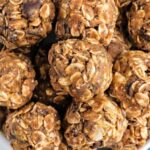In the bustling kitchens of Turkish households, the art of bread-making is revered, woven into the cultural fabric of Anatolia. Veganism, with its emphasis on natural ingredients and sustainability, finds resonance in this centuries-old tradition. Crafting Turkish vegan bread is not just a culinary endeavor; it’s a celebration of heritage and innovation.
Unlocking Tradition with a Modern Twist: To embark on this gastronomic journey, one must gather the quintessential ingredients: all-purpose flour, instant yeast, salt, sugar, warm water, and olive oil. The fusion of these simple elements unlocks the rich tapestry of flavors that characterize Turkish cuisine, while adhering to the ethos of veganism.
Activating the Senses: The process begins with activating the yeast, a transformative ritual where warm water and sugar coax the dormant microorganisms to life. As the mixture froths and bubbles, it releases a subtle aroma, signaling the inception of a culinary voyage. This crucial step sets the stage for the alchemy of bread-making.
Harmonizing the Ingredients: In a harmonious choreography, the dry ingredients—flour and salt—are summoned to blend. With meticulous care, a well is formed, a receptacle for the yeast elixir and the verdant essence of olive oil. Through gentle kneading, the flour yields, embracing the moisture, and forming a supple dough—a testament to the marriage of tradition and innovation.
Nurturing the Dough: As the dough rests, it undergoes a metamorphosis, expanding in size and stature. Sheltered from the vagaries of the world, it rises, imbued with the warmth of the kitchen hearth. This nurturing period, steeped in patience and anticipation, is the crucible where flavor and texture converge.
Shaping the Narrative: With deft hands, the dough is shaped, each portion an embodiment of craftsmanship and intention. The canvas is adorned with orbs of promise, each bearing the imprint of its creator. In the silence of the kitchen, these humble forms await their moment of transformation.
The Culinary Symphony: As the oven preheats, anticipation mounts—a crescendo of heat and possibility. With a gentle brush of olive oil, the loaves are ushered into the fiery embrace, their journey to fruition commencing. Within the confines of the oven, alchemy unfolds, as the raw ingredients metamorphose into golden-hued perfection.
Savoring the Fruits of Labor: Emerging from the oven, the bread exudes an intoxicating aroma—a symphony of earthy notes and floral undertones. Each loaf bears the hallmark of craftsmanship, a testament to tradition reimagined. As the first slice yields to the touch, revealing a tender crumb and crisp crust, one is transported to the sun-kissed hills of Anatolia.
Conclusion: In the crucible of the Turkish kitchen, tradition and innovation converge, giving rise to a culinary masterpiece. Through the art of bread-making, veganism finds expression, harmonizing ancient wisdom with contemporary sensibilities. With each loaf, a story unfolds—a tale of heritage, sustenance, and the timeless quest for flavor.



